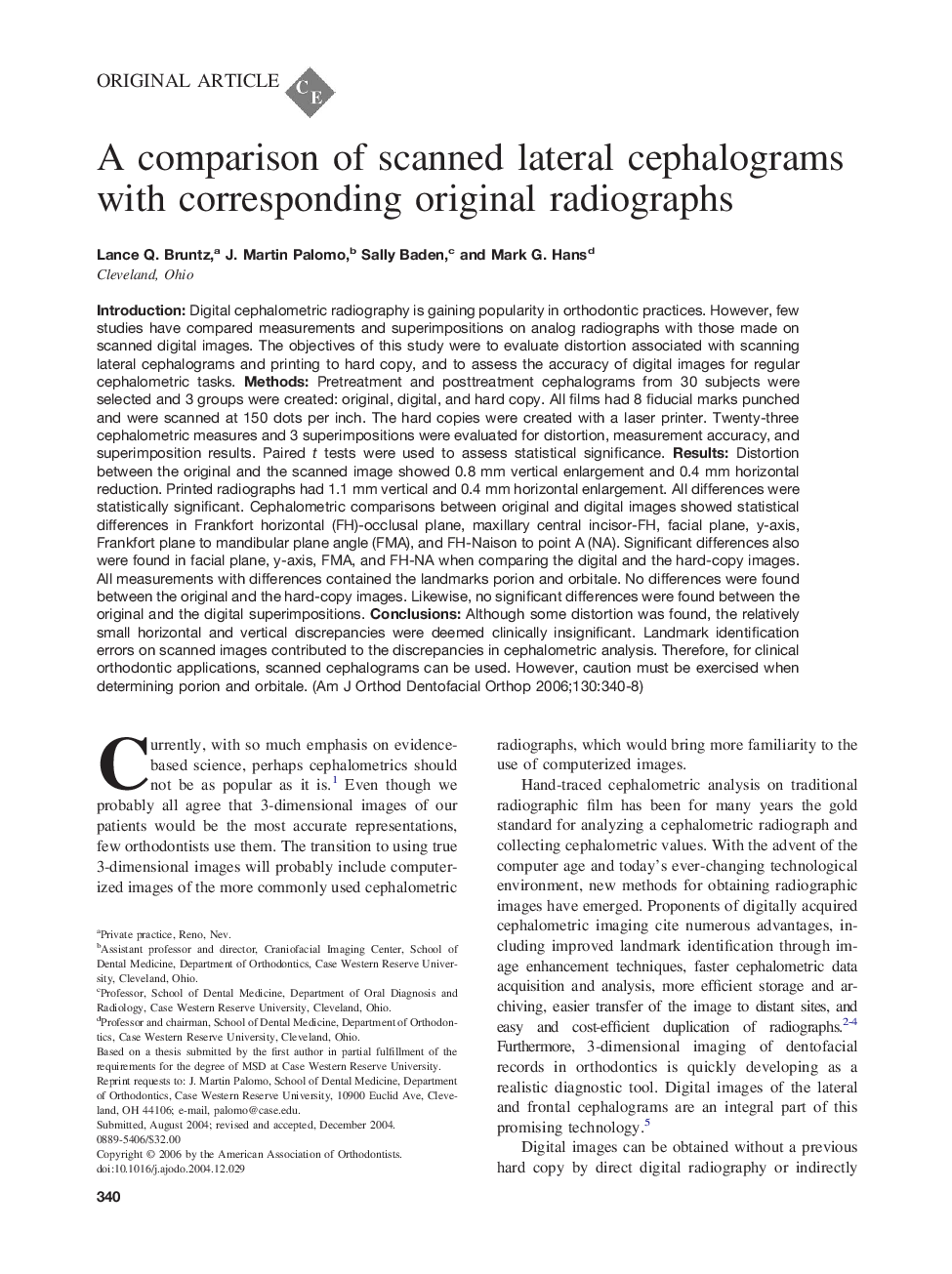| کد مقاله | کد نشریه | سال انتشار | مقاله انگلیسی | نسخه تمام متن |
|---|---|---|---|---|
| 3119510 | 1582802 | 2006 | 9 صفحه PDF | دانلود رایگان |

Introduction: Digital cephalometric radiography is gaining popularity in orthodontic practices. However, few studies have compared measurements and superimpositions on analog radiographs with those made on scanned digital images. The objectives of this study were to evaluate distortion associated with scanning lateral cephalograms and printing to hard copy, and to assess the accuracy of digital images for regular cephalometric tasks. Methods: Pretreatment and posttreatment cephalograms from 30 subjects were selected and 3 groups were created: original, digital, and hard copy. All films had 8 fiducial marks punched and were scanned at 150 dots per inch. The hard copies were created with a laser printer. Twenty-three cephalometric measures and 3 superimpositions were evaluated for distortion, measurement accuracy, and superimposition results. Paired t tests were used to assess statistical significance. Results: Distortion between the original and the scanned image showed 0.8 mm vertical enlargement and 0.4 mm horizontal reduction. Printed radiographs had 1.1 mm vertical and 0.4 mm horizontal enlargement. All differences were statistically significant. Cephalometric comparisons between original and digital images showed statistical differences in Frankfort horizontal (FH)-occlusal plane, maxillary central incisor-FH, facial plane, y-axis, Frankfort plane to mandibular plane angle (FMA), and FH-Naison to point A (NA). Significant differences also were found in facial plane, y-axis, FMA, and FH-NA when comparing the digital and the hard-copy images. All measurements with differences contained the landmarks porion and orbitale. No differences were found between the original and the hard-copy images. Likewise, no significant differences were found between the original and the digital superimpositions. Conclusions: Although some distortion was found, the relatively small horizontal and vertical discrepancies were deemed clinically insignificant. Landmark identification errors on scanned images contributed to the discrepancies in cephalometric analysis. Therefore, for clinical orthodontic applications, scanned cephalograms can be used. However, caution must be exercised when determining porion and orbitale.
Journal: American Journal of Orthodontics and Dentofacial Orthopedics - Volume 130, Issue 3, September 2006, Pages 340–348